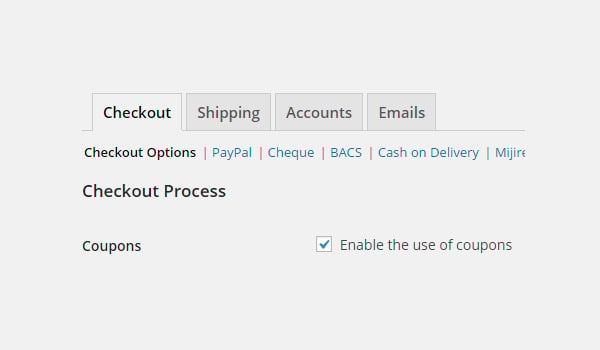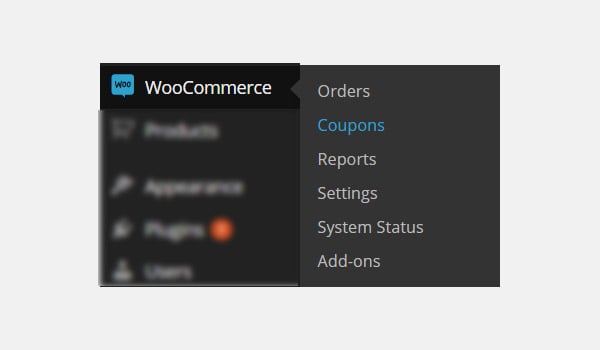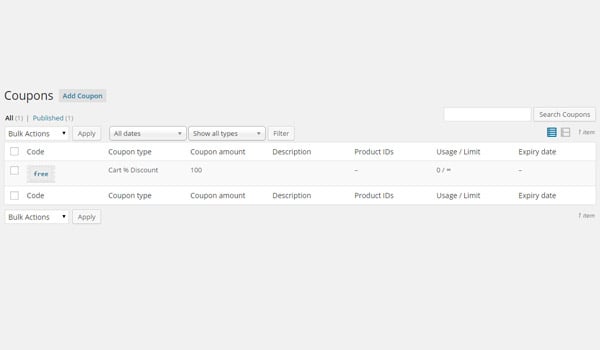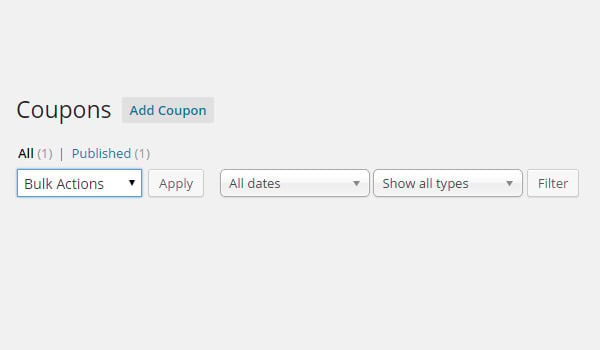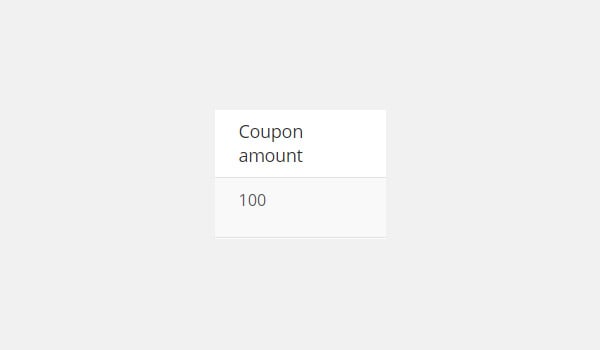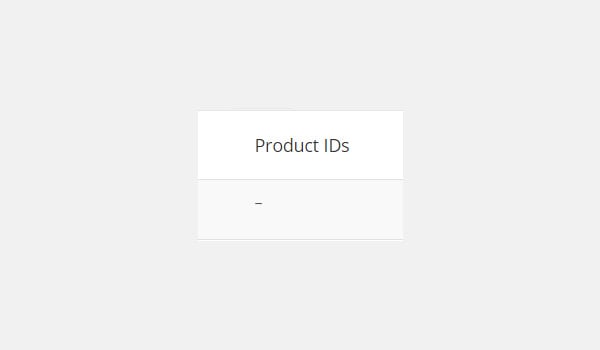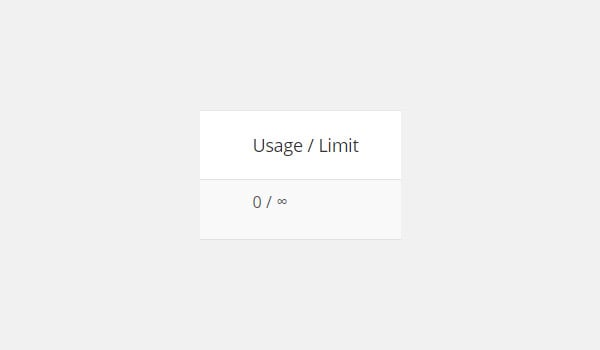Improving and increasing the financial health of the business is the goal of every online store owner, and sales play a vital role in achieving this goal. In this article, we’ll look at one of the best ways WooCommerce offers to reward customers, namely coupons. Providing customers with discount coupons guarantees an increase in sales, making it a win-win situation. So let's get started.
coupon
In terms of offering discounts to customers, offering coupons is considered very encouraging. At the same time, they offer online store owners a great opportunity to increase their sales with this plugin. So, before we get started with today’s post, let’s take a look at what Wikipedia says about coupons.
In marketing, Coupon is a ticket or document Can be redeemed for financial discounts or rebates under the following circumstances: buy product. usually, Coupons are issued by consumer product manufacturers or Retailer, used in retail stores as part of a sale Promotions. 塊引用>WooCommerce allows online store owners to control whether they are willing to offer coupons to customers. Coupons can be applied to the shopping cart and checkout page. But in order to use coupons in WooCommerce, you first need to enable them.
Coupons can be easily enabled from WooCommerce settings, which I discussed in a previous article. However, if you don't remember, here's a quick summary.
Go to WooCommerce > Settings > Checkout > Checkout Options. Enable the coupon checkbox from here.
Manage Coupons in WooCommerce
Previously, managing and maintaining coupons was considered a cumbersome task for online store owners. But WooCommerce makes this process just a few clicks away. You can find a separate coupon section where you can not only create new coupons but also track them properly.
Start by logging into your website’s Dashboard account and go to WooCommerce > Coupons.
It will lead you to a page similar to the one shown above. This page looks very similar to the section in WooCommerce for managing posts, categories, products, orders, etc.
The first line is not new to us. Here you'll find some Bulk Actions, such as Edit and Move to Trash, as well as some Filters that can Allows you to sort various coupons based on Date and Type.
Below this row you can find a column with information for all coupons (whether published or not). Each coupon is placed on a single line. So let's look at these columns.
Code
The first column will specify the code or more precisely the name of the coupon. Coupon names are saved as unique codes to avoid duplication. In this column, each coupon code is displayed on an image that looks like a ticket. This is a coupon that your customers use to receive discounts.
Coupon Edit
It is absolutely possible to edit coupons in WooCommerce, it works the same way as editing a post, product, order, but the difference is that when you hover over any coupon code , it will change color and pop up a message saying Edit Coupon. So, click on the coupon title to change the coupon details. Likewise, the Trash option will appear next to it. Similar to other post types (e.g. post, page, product), you can also drop coupons.
Coupon type
The next column will specify the type of coupon. WooCommerce mainly offers four different coupon types. these are:
- Shopping Cart Discount
- Shopping cart% discount
- Product Discount
- Product discount percentage
The shop owner can choose any of the above types. I will explain these four types in detail in my next article when creating coupons. Now let’s familiarize ourselves with the user interface of coupons in WooCommerce.
Coupon amount
This column will list the value of the coupon. It will specify how much discount you offer to your customers.
describe
If you have added any short description about the coupon, then it will appear in the "Description" column. This field is optional. However, if you fill out that information, you will certainly provide your customers with some additional information that will guide them to the details of the coupon.
Product ID
The next column is the product ID, the details in this column are also optional. When you create a coupon specific to a specific product or set of products, WooCommerce displays the IDs of those products in this column.
Usage/Restrictions
The name of this column is self-explanatory: it specifies the validity and usage of a specific coupon. Generally, any coupon can only be used once by any customer, after which the coupon is no longer valid for the same customer. But we will see how to modify it and control the results in the next article.
Date of Expiry
The last column is the expiration date, which is the date when the specific coupon expires and is no longer available. WooCommerce allows you to set an expiration date. For example, if you only offer some coupons for Cyber ??Monday, those coupons should expire at the end of Cyber ??Monday.
in conclusion
This is an overview of the various options you will encounter when managing coupons in WooCommerce. In my next article I will explain how to create a new coupon for a customer and how to configure some of the settings associated with it. If you have any questions about this article, you can comment below and ask.
The above is the detailed content of WooCommerce Coupon Management: A Beginner's Guide. For more information, please follow other related articles on the PHP Chinese website!

Hot AI Tools

Undress AI Tool
Undress images for free

Undresser.AI Undress
AI-powered app for creating realistic nude photos

AI Clothes Remover
Online AI tool for removing clothes from photos.

Clothoff.io
AI clothes remover

Video Face Swap
Swap faces in any video effortlessly with our completely free AI face swap tool!

Hot Article

Hot Tools

Notepad++7.3.1
Easy-to-use and free code editor

SublimeText3 Chinese version
Chinese version, very easy to use

Zend Studio 13.0.1
Powerful PHP integrated development environment

Dreamweaver CS6
Visual web development tools

SublimeText3 Mac version
God-level code editing software (SublimeText3)
 How to diagnose high CPU usage caused by WordPress
Jul 06, 2025 am 12:08 AM
How to diagnose high CPU usage caused by WordPress
Jul 06, 2025 am 12:08 AM
The main reasons why WordPress causes the surge in server CPU usage include plug-in problems, inefficient database query, poor quality of theme code, or surge in traffic. 1. First, confirm whether it is a high load caused by WordPress through top, htop or control panel tools; 2. Enter troubleshooting mode to gradually enable plug-ins to troubleshoot performance bottlenecks, use QueryMonitor to analyze the plug-in execution and delete or replace inefficient plug-ins; 3. Install cache plug-ins, clean up redundant data, analyze slow query logs to optimize the database; 4. Check whether the topic has problems such as overloading content, complex queries, or lack of caching mechanisms. It is recommended to use standard topic tests to compare and optimize the code logic. Follow the above steps to check and solve the location and solve the problem one by one.
 How to minify JavaScript files in WordPress
Jul 07, 2025 am 01:11 AM
How to minify JavaScript files in WordPress
Jul 07, 2025 am 01:11 AM
Miniving JavaScript files can improve WordPress website loading speed by removing blanks, comments, and useless code. 1. Use cache plug-ins that support merge compression, such as W3TotalCache, enable and select compression mode in the "Minify" option; 2. Use a dedicated compression plug-in such as FastVelocityMinify to provide more granular control; 3. Manually compress JS files and upload them through FTP, suitable for users familiar with development tools. Note that some themes or plug-in scripts may conflict with the compression function, and you need to thoroughly test the website functions after activation.
 How to optimize WordPress without plugins
Jul 05, 2025 am 12:01 AM
How to optimize WordPress without plugins
Jul 05, 2025 am 12:01 AM
Methods to optimize WordPress sites that do not rely on plug-ins include: 1. Use lightweight themes, such as Astra or GeneratePress, to avoid pile-up themes; 2. Manually compress and merge CSS and JS files to reduce HTTP requests; 3. Optimize images before uploading, use WebP format and control file size; 4. Configure.htaccess to enable browser cache, and connect to CDN to improve static resource loading speed; 5. Limit article revisions and regularly clean database redundant data.
 How to prevent comment spam programmatically
Jul 08, 2025 am 12:04 AM
How to prevent comment spam programmatically
Jul 08, 2025 am 12:04 AM
The most effective way to prevent comment spam is to automatically identify and intercept it through programmatic means. 1. Use verification code mechanisms (such as Googler CAPTCHA or hCaptcha) to effectively distinguish between humans and robots, especially suitable for public websites; 2. Set hidden fields (Honeypot technology), and use robots to automatically fill in features to identify spam comments without affecting user experience; 3. Check the blacklist of comment content keywords, filter spam information through sensitive word matching, and pay attention to avoid misjudgment; 4. Judge the frequency and source IP of comments, limit the number of submissions per unit time and establish a blacklist; 5. Use third-party anti-spam services (such as Akismet, Cloudflare) to improve identification accuracy. Can be based on the website
 How to use the Transients API for caching
Jul 05, 2025 am 12:05 AM
How to use the Transients API for caching
Jul 05, 2025 am 12:05 AM
TransientsAPI is a built-in tool in WordPress for temporarily storing automatic expiration data. Its core functions are set_transient, get_transient and delete_transient. Compared with OptionsAPI, transients supports setting time of survival (TTL), which is suitable for scenarios such as cache API request results and complex computing data. When using it, you need to pay attention to the uniqueness of key naming and namespace, cache "lazy deletion" mechanism, and the issue that may not last in the object cache environment. Typical application scenarios include reducing external request frequency, controlling code execution rhythm, and improving page loading performance.
 How to enqueue assets for a Gutenberg block
Jul 09, 2025 am 12:14 AM
How to enqueue assets for a Gutenberg block
Jul 09, 2025 am 12:14 AM
When developing Gutenberg blocks, the correct method of enqueue assets includes: 1. Use register_block_type to specify the paths of editor_script, editor_style and style; 2. Register resources through wp_register_script and wp_register_style in functions.php or plug-in, and set the correct dependencies and versions; 3. Configure the build tool to output the appropriate module format and ensure that the path is consistent; 4. Control the loading logic of the front-end style through add_theme_support or enqueue_block_assets to ensure that the loading logic of the front-end style is ensured.
 How to add custom fields to users
Jul 06, 2025 am 12:18 AM
How to add custom fields to users
Jul 06, 2025 am 12:18 AM
To add custom user fields, you need to select the extension method according to the platform and pay attention to data verification and permission control. Common practices include: 1. Use additional tables or key-value pairs of the database to store information; 2. Add input boxes to the front end and integrate with the back end; 3. Constrain format checks and access permissions for sensitive data; 4. Update interfaces and templates to support new field display and editing, while taking into account mobile adaptation and user experience.
 How to optimize WordPress robots txt
Jul 13, 2025 am 12:37 AM
How to optimize WordPress robots txt
Jul 13, 2025 am 12:37 AM
robots.txt is crucial to the SEO of WordPress websites, and can guide search engines to crawl behavior, avoid duplicate content and improve efficiency. 1. Block system paths such as /wp-admin/ and /wp-includes/, but avoid accidentally blocking the /uploads/ directory; 2. Add Sitemap paths such as Sitemap: https://yourdomain.com/sitemap.xml to help search engines quickly discover site maps; 3. Limit /page/ and URLs with parameters to reduce crawler waste, but be careful not to block important archive pages; 4. Avoid common mistakes such as accidentally blocking the entire site, cache plug-in affecting updates, and ignoring the matching of mobile terminals and subdomains.




